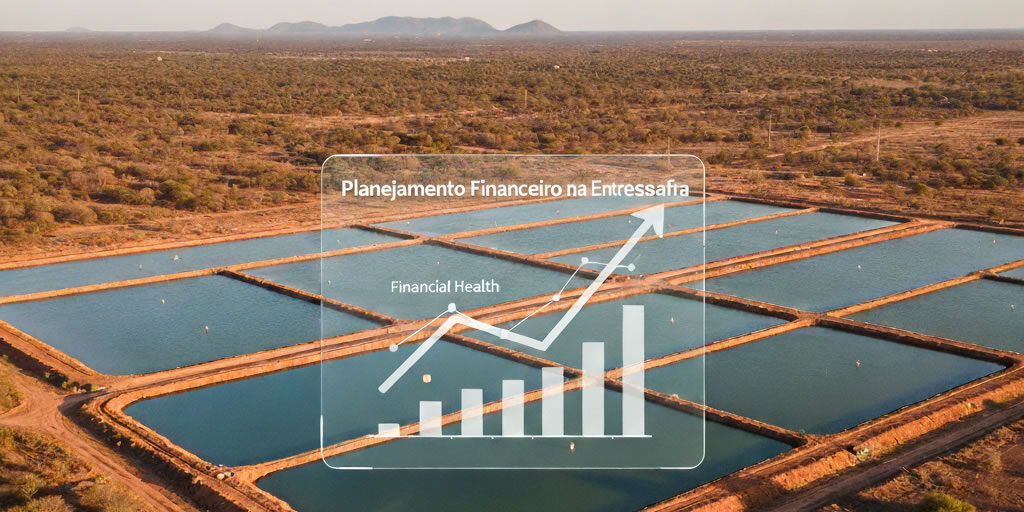- Software Gestor para Aquicultura
- (85) 2139-6730
- contato@despesca.com.br
Cash Flow in Aquaculture: How to Plan for the Off-Season and Maintain Financial Health

Biofloc vs. Conventional Systems: A Comparative Analysis of Costs, Investment, and Profitability
27/08/2025
Early Detection: How to Identify Signs of Stress and Disease in Fish and Shrimp and Act Fast
29/08/2025Aquaculture is an activity marked by production cycles. A farm’s success depends not only on the ability to produce high-quality fish or shrimp but also on robust financial management capable of navigating periods of lower or no revenue. The off-season, the period between the harvest of one cycle and the start of sales for the next, represents one of the biggest challenges to a producer’s cash flow.
During these months, revenue stops, but fixed and variable costs continue, such as pond maintenance, electricity, salaries, and the purchase of inputs for the next cycle. Inadequate planning can lead to debt and compromise the viability of the entire business.
Identifying the Financial Challenges of the Off-Season
The main challenge is the mismatch between revenues and expenses. While sales are seasonal and concentrated in the harvest periods, costs are continuous. Without a regular inflow of capital, the following expenses can become a major problem:
- Fixed Costs: Staff salaries, land rent or lease, taxes, insurance, and administrative expenses.
- Maintenance: Repairs to equipment (aerators, pumps), structures (ponds, gates), and vehicles.
- Inputs for the New Cycle: Purchase of post-larvae or fingerlings, initial feed, and products for water treatment.
- Unexpected Expenses: Health emergencies, critical equipment failure, or climate variations that require unplanned investments.
A lack of liquidity to cover these expenses can force the producer to seek high-interest loans or sell products below market price out of an immediate need for capital, eroding profit margins.
Strategies for Effective Financial Planning
Overcoming the off-season requires discipline and, above all, planning. Financial management should be a continuous activity, not just a reactive one.
- Detailed Cash Flow Projection: The first step is to map all expected expenses and revenues over 12 months. The producer should list all fixed costs and estimate variable costs based on data from previous cycles. Likewise, they should project revenues based on production expectations and market prices. This projection will clearly show the months of surplus (post-harvest) and the months of deficit (off-season).
- Creation of a Strategic Reserve: With the projection in hand, the need to create a financial reserve becomes clear. During the high-revenue months, a portion of the profit should be systematically allocated to a reserve fund. The goal is for this fund to be sufficient to cover all operating costs during the months without sales, providing peace of mind to prepare for the next cycle with quality.
- Cost Analysis and Optimization: The off-season is the ideal time to analyze the costs of the previous cycle in detail and identify points for optimization. This could include renegotiating contracts with feed suppliers, implementing more efficient aeration systems to reduce energy consumption, or optimizing harvest and transport logistics.
- Seeking Planned Credit Lines: If the reserve is not sufficient, the search for credit should be planned, not an emergency. Credit lines specific to agribusiness, such as operating credit, generally offer lower interest rates and payment terms aligned with the production cycle, making them a much healthier option than short-term loans.
Technology as a Central Tool in Financial Management
Manually controlling all these variables is complex and prone to errors. This is where technology becomes the producer’s greatest ally. Using management software, such as Despesca, centralizes all of the farm’s financial and operational information in one place.
With a management system, you can:
- Record costs in real-time: Log every expense, whether for feed, labor, or energy, allowing precise control over where money is being invested.
- Generate accurate financial reports: Create cash flow projections based on real historical data, making planning much more reliable.
- Analyze profitability per cycle: Understand exactly what the cost of production per kilogram was and the profit margin for each pond, identifying the strengths and weaknesses of the operation.
- Control input inventory: Avoid emergency and more expensive purchases by planning the acquisition of feed and other products in advance.
In summary, the off-season does not have to be a period of financial uncertainty. With careful planning, the creation of reserves, and the use of modern management tools, the producer can ensure not only the survival but also the health and prosperity of their business, cycle after cycle.



